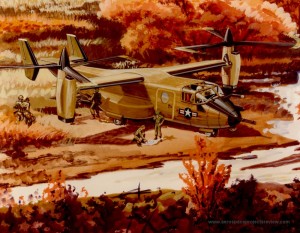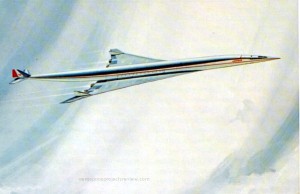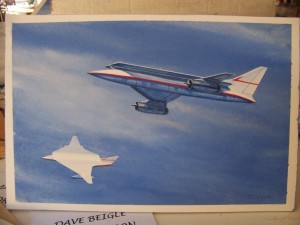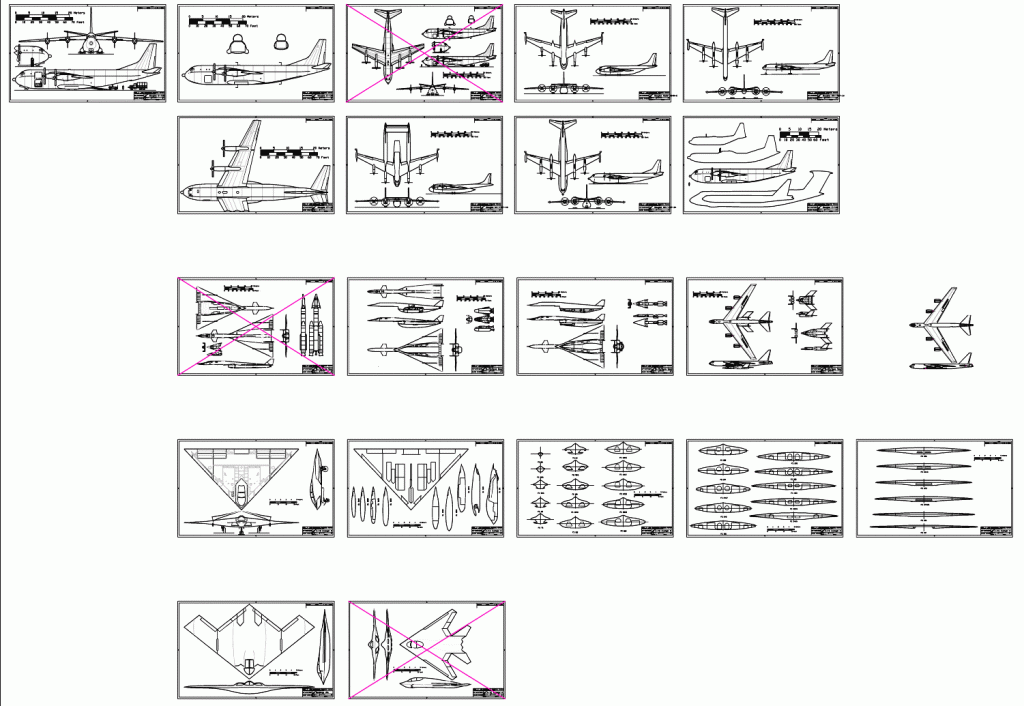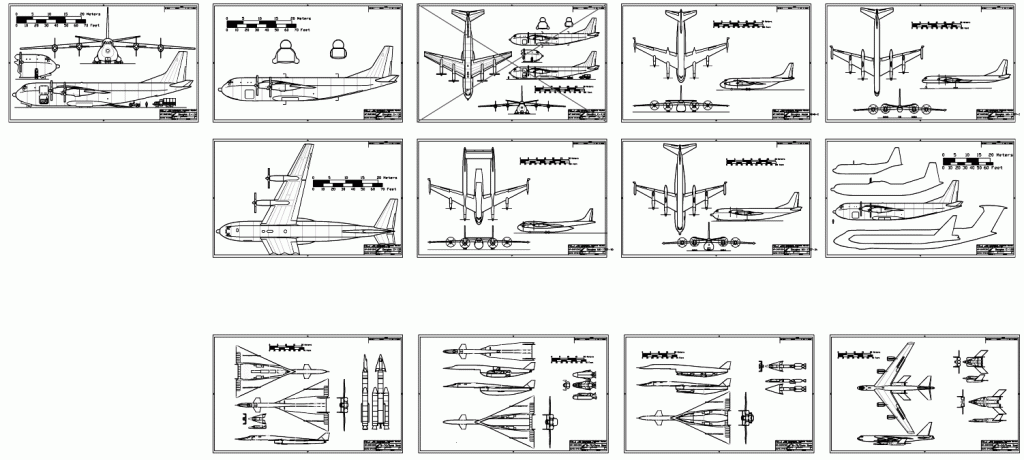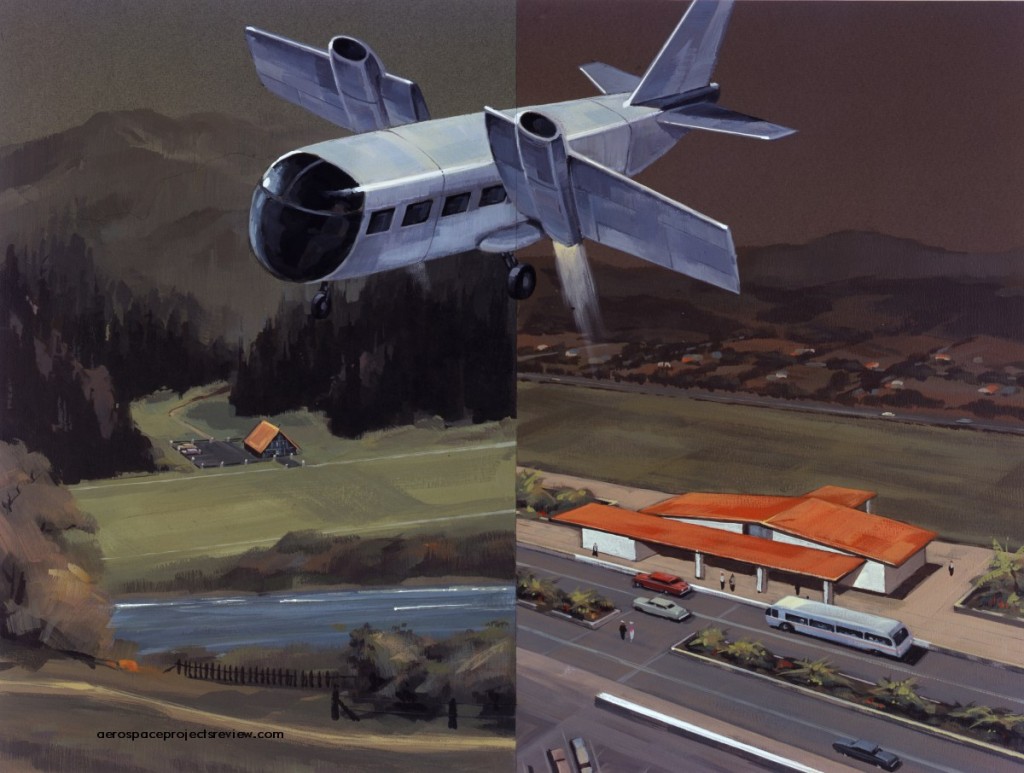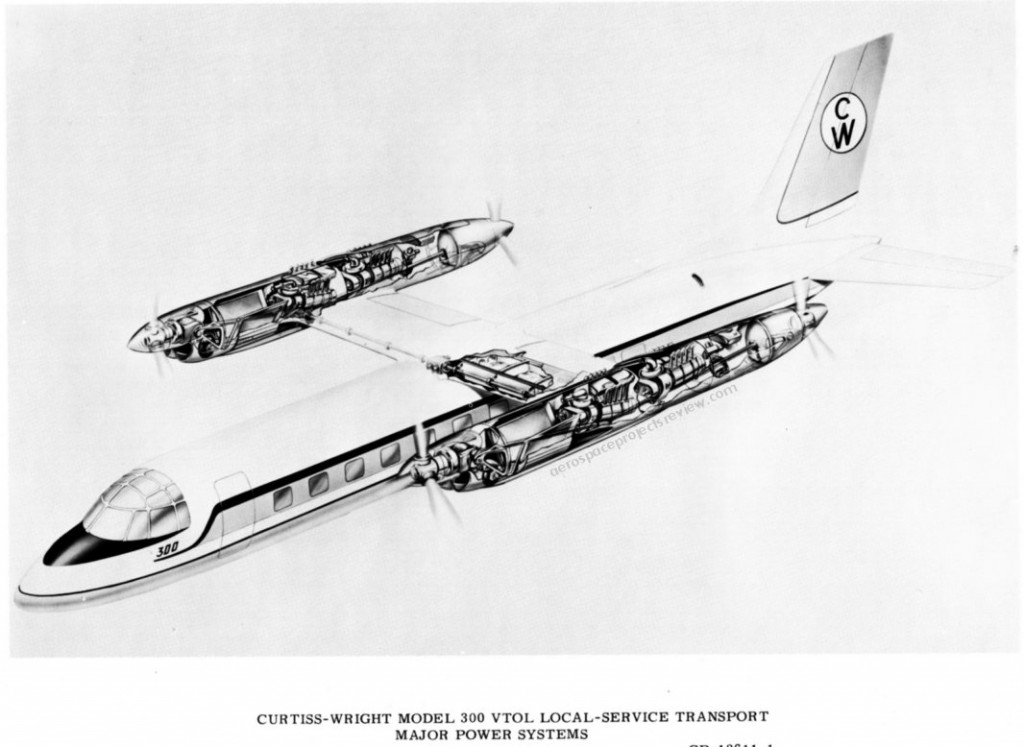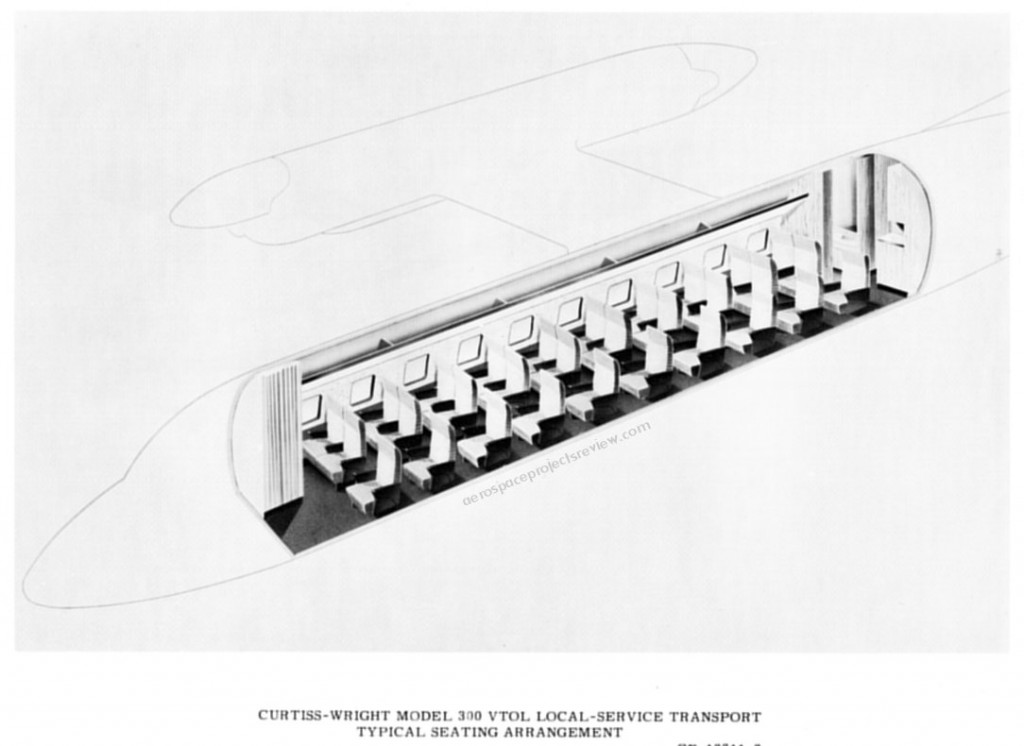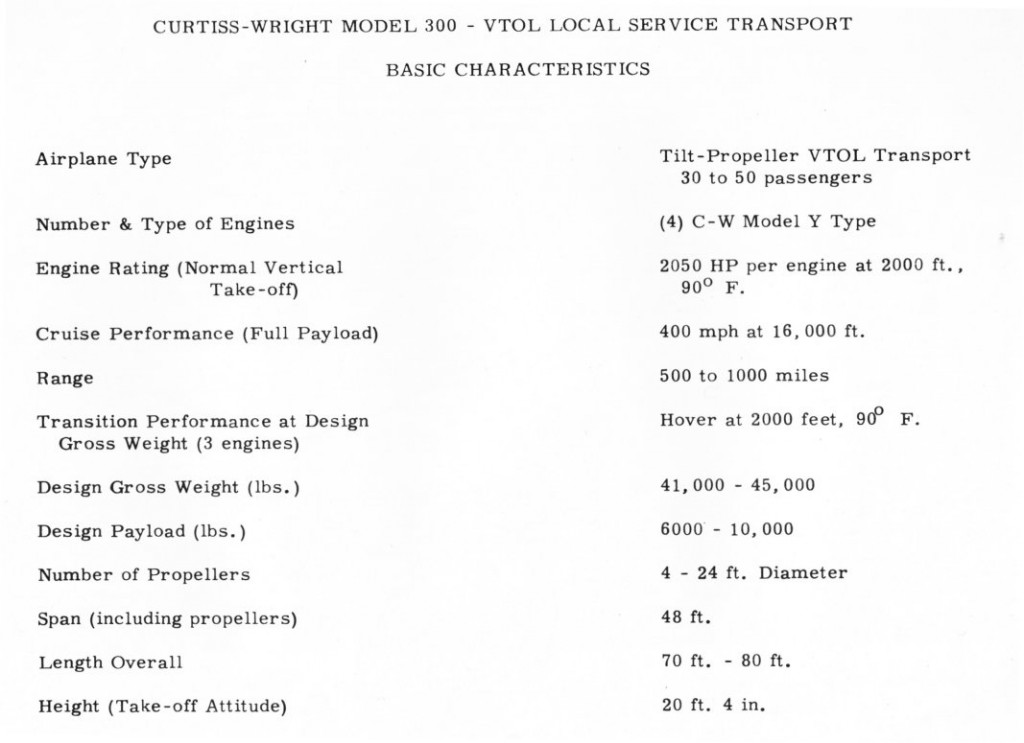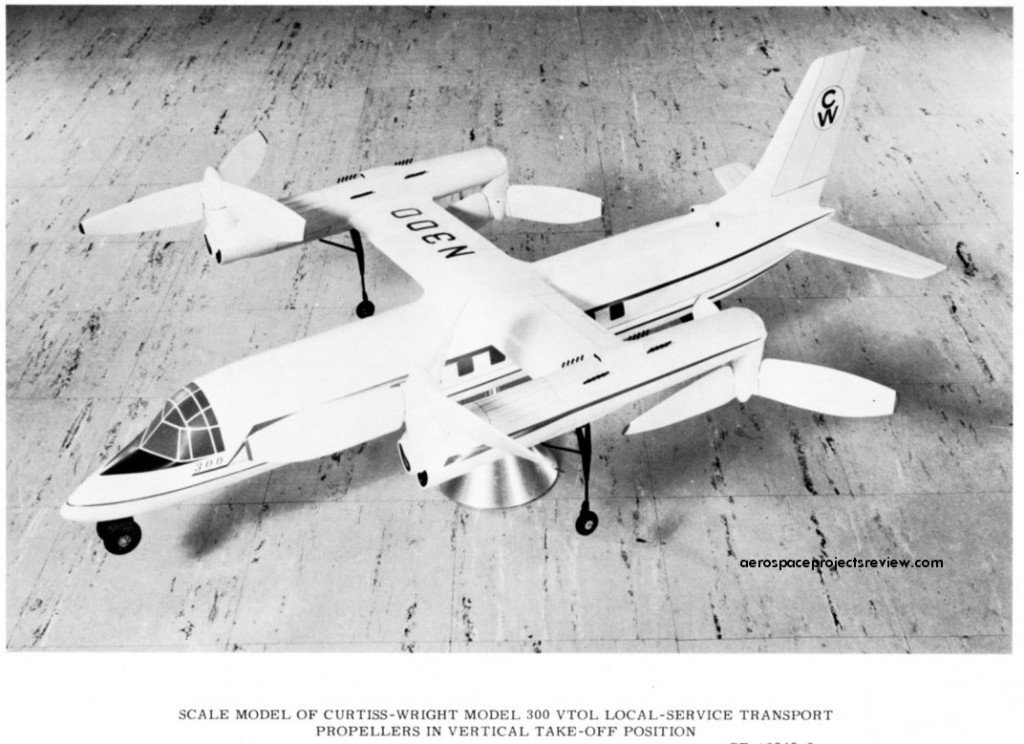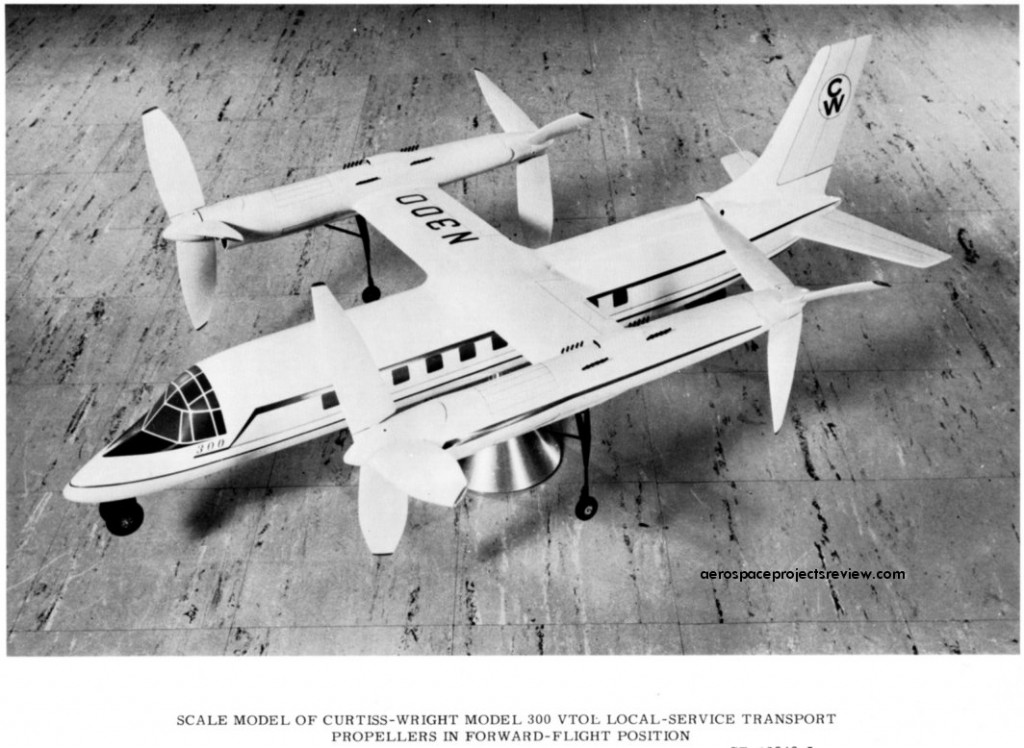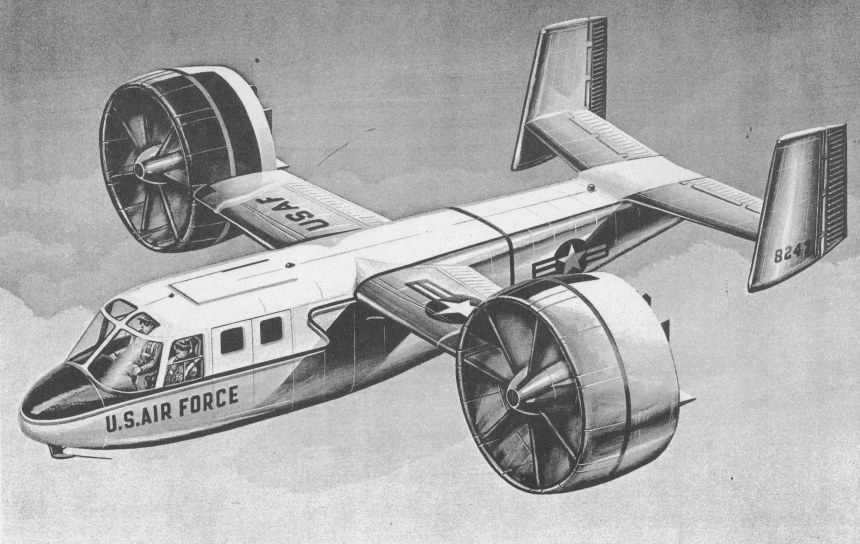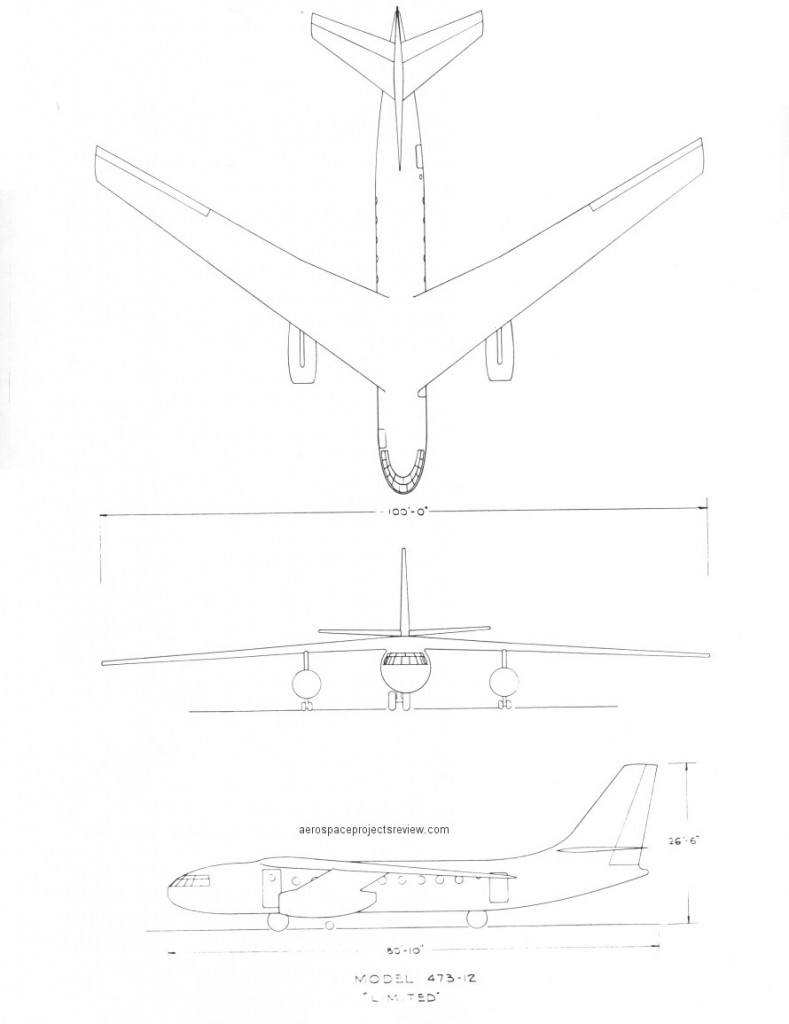An early 1980’s Bell Helicopter artists concept of what would become the V-22 Osprey. The design is largely right, though the canopy is noticeably different. Note the refueling probe above the nose and the Gatling gun projecting from the tip of the nose.
The OPEC oil embargo of the west of 1973-74 and subsequent skyrocketing of petroleum prices made sure that the American SST program, cancelled by Congress in 1971, stayed cancelled. As Concord subsequently showed, an SST in an era of expensive aviation fuel would be an economic disaster.
In the late 1970’s there was a flirtation in the American aviation industry with liquid hydrogen as an alternate fuel for jetliners. LH2 would pose a number of issues, not least of which being the very low density of the stuff; relatively gigantic heavily insulated fuel tanks would be needed. For subsonic jetliner designs, these tanks often took the shape of extremely large fuel tanks on the wings, nearly the size of the aircraft fuselage. This was not much of an option for supersonic transports due to the increased drag. Nevertheless, liquid hydrogen fueled supersonic transports were designed. One such is shown below, a late 1970’s Lockheed design. The liquid hydrogen tanks occupy much of the forward and aft fuselage volume; the passengers are stuck in a relatively short segment in the middle of the double-deck fuselage. There would be no direct connection between the passenger compartment and the cockpit… so at the very least, the likelihood of a hijacking – another feature of air travel in the late 1970’s – would be greatly reduced.
By the 1980s, efforts to wean the west off OPEC petroleum were bearing fruit (or at least looking promising); as a result, the price of oil plummeted. And with cheap oil the imperative to design hydrogen-fueled aircraft largely vanished.
Someone is selling a McDonnell-Douglas painting (the original actual painting, it seems) of an SST concept:
The aircraft uses a “parasol” wing, which was a concept that enjoyed a bit of popularity in the 1970’s. The idea: at supersonic speeds shock waves shed from the nose of the craft would impinge on the underside of the wing, adding lift and reducing fuel requirements. As memory serves, an added bonus would be that the benefit of area ruling would be in place, but without the need to actually “wasp-waist” the fuselage. Being able to produce a bland cylindrical fuselage would greatly reduce cost and stress on the large pressurized structure.
Such “favorable interference” designs would produced for fighters, SSTs and bombers, from USAF design labs to Boeing to McD to Lockheed and probably others. In time, the idea faded away; the gains in supercruise performance were apparently outweighed by cost and weight.
Note that the positioning of the engines, unusual for an SST, would also serve the favorable interference purpose: shock waves from the inlets would impinge on the wings above.
A piece of North American Aviation promotional artwork depicting a VTOL transport aircraft. It’s not clear if this design was a “real” design, or just artistic license. In either event, it depicts a jet-equipped tilt-wing design with four engines, with the wing pivot point disturbing close to the passenger cabin. It would be an incredibly loud vehicle for the passengers.
It depicts a type of aircraft that the mid 1960’s thought would soon be popular… a VTOL “bus” for relatively short range flights. It is shown here seemingly operating between a transit hub just outside of the suburbs and a very small vertiport in the mountains, presumably near a resort.
One of the last aircraft proposed by the Curtis-Wright company (early 1960’s), this version of the Model 300 featured a single main wing with wingtip engine pods. Each pod contained to Wankel rotary internal combustion engines; each engine drove a broad-bladed propeller (one at the front of the pod, one at the rear) of the type that had been successfully demonstrated on the Curtis-Wright X-19 VTOL aircraft. In order to attain vertical lift, the forward propeller would tilt up, the aft propeller would tilt down.
At the time, there was considerable interest in fast short-ranged VTOL transport. The idea was that small VTOL aircraft would operate from various small “ports” in and around major cities, flying to and from the nearest major airport (along with other transportation hubs). The VTOL would provide a bus service for the busy businessman on the go, who might need to leave his office in a hurry and catch the next jetliner to, say, London. While no VTOL aircraft such as the Model 300 were built and put into service for this role, several attempts to fill the “VTOL bus” role were attempted with helicopter, but due to noise and cost the concept never caught on.
The D190 designation was the catch-all for a wide range of tilt-duct vehicles Bell designed in the 1950’s and 1960’s. The D190B was a rescue version, intended to go after downed pilots and the like. Other versions were similar, but designed to mate up with a C-130 in flight; the C-130 would transport the D190 to the vicinity of a rescue and would transport it home again, greatly increasing range and lift capability of the D-190. Another version was designed to similarly mate up with flying command posts and Air Force One, to transfer supplies and personnel.
The Boeing 473-12, from July 1948. An early concept for a passenger jetliner, this would have been powered by two Rolls Royce “Nene” engines and could carry a crew of three and 27 passengers a range of 550 miles. This was an early step on the path to the 707, the worlds first successful jetliner.
A three-view of the early jetliner design, showing the clean lines and basic geometry that would become virtually standard for the next seventy years or more.
